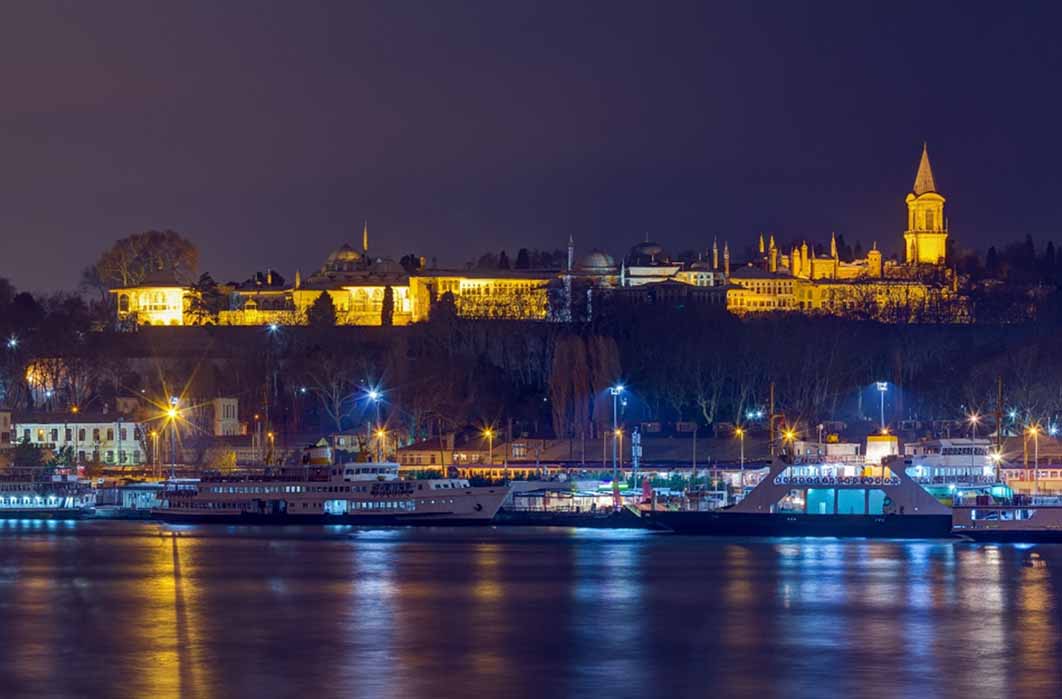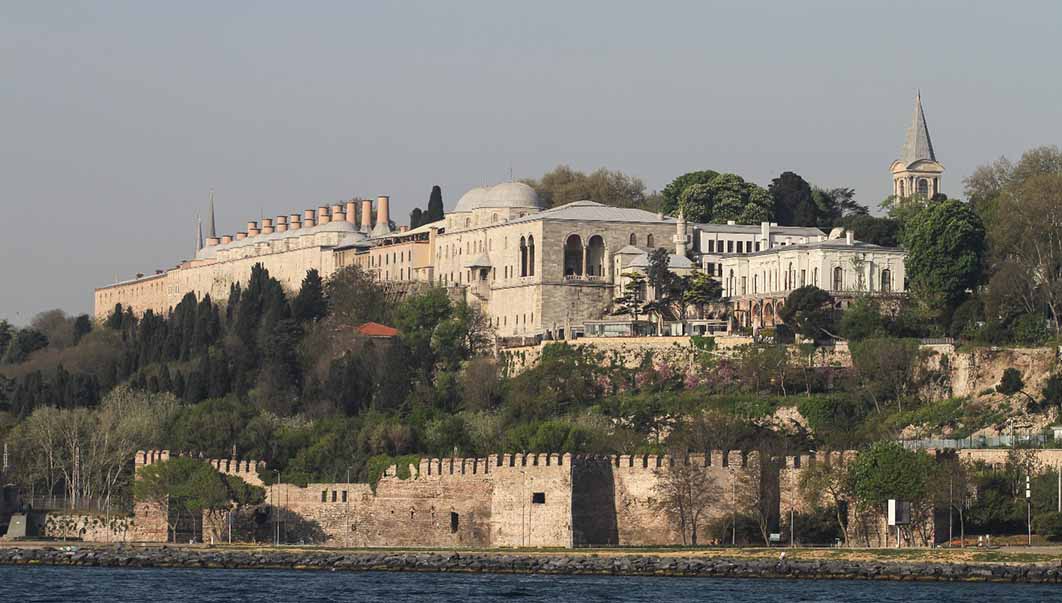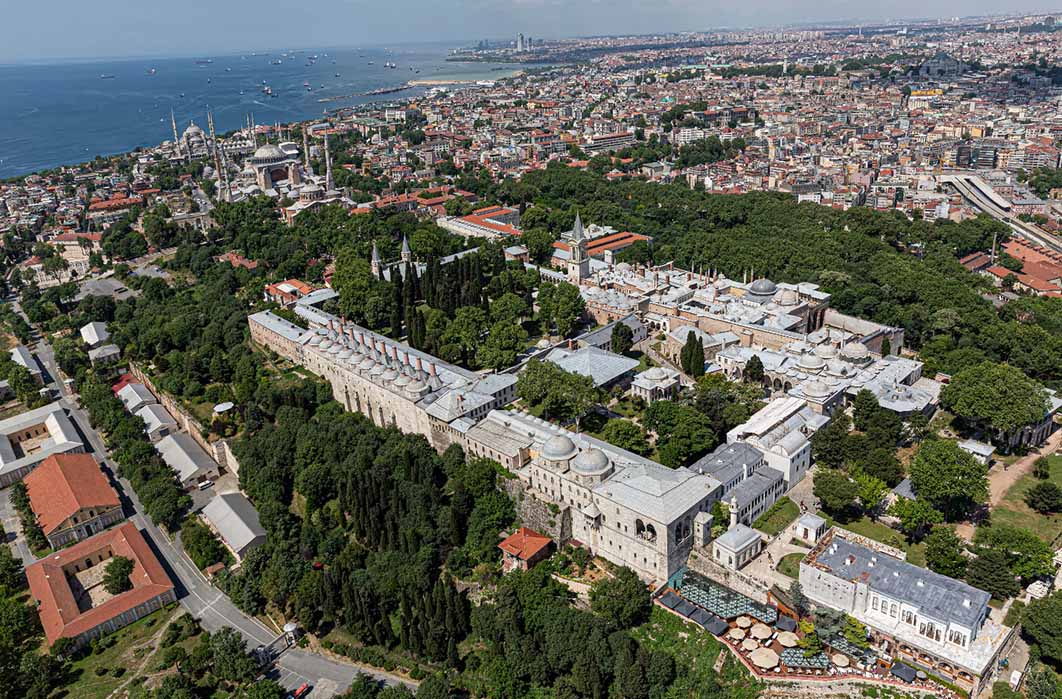
Topkapi Palace, Showcasing Ottoman Splendor And Opulence
Centuries before Versailles, Buckingham Palace and the Kremlin Palace, on the shore where the Western world meets the East, cupped by the Sea of Marmara, the Bosphorus Strait and the Golden Horn, there rose a palace of such splendor, called Topkapi, where Ottoman sultans lived in lavish luxury, entertained kings, princes and foreign dignitaries, hoarded and displayed their riches and treasures and kept a harem of 1,000 concubines. Topkapi’s grandeur is tangible evidence of the Islamic Ottoman victory when Constantinople, the last bastion of the Roman-Byzantine Empire, finally fell.

View of the Fourth Courtyard of Topkapi Palace secluded behind the Walls of Constantinople (EvrenKalinbacak/Adobe Stock)
On May 29, 1453, 21-year old Sultan Mehmet II the Conqueror of the Ottoman Dynasty, finally brought the Byzantine Empire to its knees by conquering Constantinople. Not only did the Fall of Constantinople herald the end of the Middle Ages, it also changed military history as the Theodosian Walls were not approached by siege towers, but relentlessly bombarded with gunpowder, until the city surrendered. The city was sacked, looted and the men, women and children mercilessly raped, even on the altar of the Hagia Sophia, but when the dust settled and the survivors and conquerors regained their senses, Sultan Mehmet II began to transform the city into one of the most beautiful and exotic the world has ever seen, crowned by a majestic palace complex, today called Topkapi Palace, a place of ostentatious splendour, showcasing the Ottoman supremacy.
Designing The New Palace
Sultan Mehmet II did not immediately settle down in Constantinople - informally called Istanbul. For six years he launched military campaigns against Serbia, Morea and Trebizond, before he returned and triumphantly rode his horse through the Adrianople Gate of Constantinople. His Greek historian and biographer, Michael Critobulus recorded that the sultan, living in his Old Palace (Eski Saray) in the Beyazit district, built a so-called pleasure pergola called the Tiled Kiosk, or Cinili Kiosk, overlooking the Golden Horn, and he was so inspired by this location that he decided to build himself a New Palace (Yeni Saray or Saray-ı Cedîd-i Âmire) on the ruins of the Byzantine acropolis. Situated on the Sarayburnu (Seraglio Point), it had spectacular panoramic views of the Sea of Marmara, the Bosphorus Straight and the Golden Horn, as well as the historical peninsula (now Fatih District of Istanbul). The land side was protected by the Theodosian Walls and the side facing the sea was protected by the Byzantine Walls of Constantinople. The location for the New Palace was perfect.

The entry of Sultan Mehmed II into Constantinople through Adrianople Gate, by Fausto Zonaro (1854–1929) (Public Domain)
According to Critobulus in his History, Sultan Mehmet II “took care to summon the very best workmen from everywhere – masons and stonecutters and carpenters ... For he was constructing great edifices which were to be worth seeing and should in every respect vie with the greatest and best of the past.” Sultan Mehmet II certainly took a personal interest in his New Palace, positioning his personal quarters at the highest point of the promontory. Sultan Mehmet II valued silence and privacy, thus the palace was unique in its design, with centred courtyards and gardens, flanked by administrative, housekeeping and private buildings. Grilled windows and hidden passages ensured the discretion for the royal family and the sultan would often use these to eavesdrop on conversations. Strategic water fountains muted private conversations, eunuchs maintained a strict regime in the harem and the Janissaries, elite imperial bodyguards, guarded the sultan and his household. The principle of imperial seclusion is a concept embedded by Sultan Mehmed II in his 1477- and 1481-Kanunname Code.
Over centuries, Topkapi Palace was extended by subsequent sultans, eventually covering about 700 000 square meters. The New Palace was named Topkapi in the 18th century during the reign of Mahmud I. Topkapi Palace was home to all the Ottoman sultans for a period of nearly four centuries, until the reign of Abdulmecid I (1839-1860), when they moved to the ostentatious European-style palaces such as the Dolmabache Palace built on the shores of the Bosphorus. The Dolmabache Palace was the residence of Ottoman sultans from 1853 until 1889, and from 1909 until 1922, when the Ottoman reign was abolished and Turkey gained independence.





